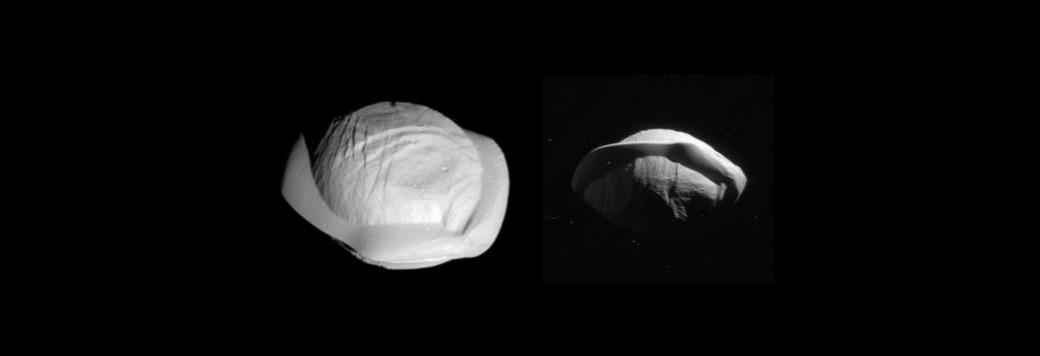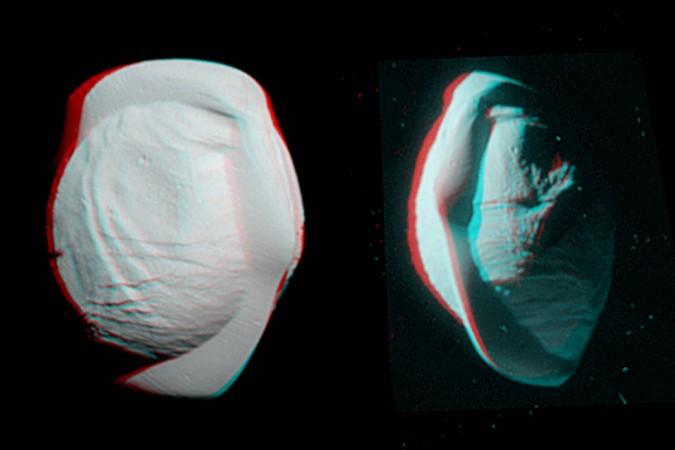
NASA's Cassini spacecraft captured detailed images of Saturn's moon, Pan. The photos of the gas giant's moon were taken from a distance of 15,300 miles (24,600 kilometers) earlier this month, on March 7, 2017.
Also Read: NASA astronaut claimed he saw dead aliens after infamous Rosewell UFO crash! [VIDEOS]
In comparision to previous images of Pan, the resolution of these images is said to be up to eight times better.
Pan is Saturn's second-innermost moon, present in the Encke Gap region of Saturn's A-ring. It has an average diameter of 17 miles (28 kilometers).
In both images of this unique-looking moon, the side facing away from Saturn -- the trailing side -- can be seen.

These photographs were taken by Cassini's narrow-angle camera; the image on the left was taken from a distance of around 16,000 miles (25,000 kilometers) and the image on the right was taken from approximately 21,000 miles (34,000 kilometers) away.
The astronomers who imaged the photographs believe that Pan was formed within the rings of the gas giant and comprises matter from the ring, responsible for the shape of its central mass.
The UFO-shaped moon is thin around its equator; the edges are believed to have formed after the central bulge, and after it cleared the gap in Saturn's rings.
"On a larger, more massive body, this ridge would not be so tall [relative to the body], because gravity would cause it to flatten out," a NASA statement revealed.
"But Pan's gravity is so feeble that the ring material simply settles onto Pan and builds up. Other dynamic forces keep the ridge from growing indefinitely," the NASA officials added.












